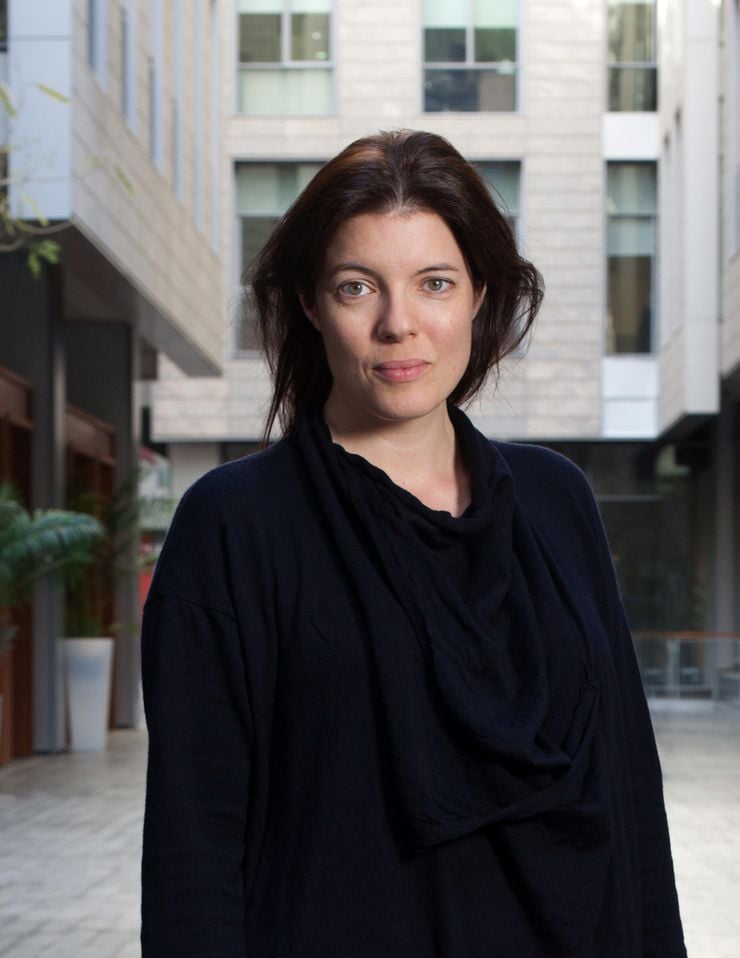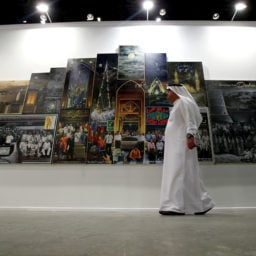When I first came to the United Arab Emirates as a journalist in 2001, it was to be based somewhere, anywhere, in the Middle East. We thought we would stay a couple of years and then head to Beirut or somewhere more obviously “artsy.” My last role in London was as an editor at the publisher Phaidon; explaining that I was moving to Dubai sparked an incredulous round of “where?” “why?” and “scorchio!”
At the time, the common expat refrain, usually expressed around the pool or bar, was that the UAE lacked culture. Yet even the faintest scratch of the surface revealed otherwise—it was just that this cultural scene didn’t offer itself up as easily consumable, wasn’t fluent in International Art English, and didn’t deal in the “poor-nography” expected at the time from art scenes outside Europe and America.
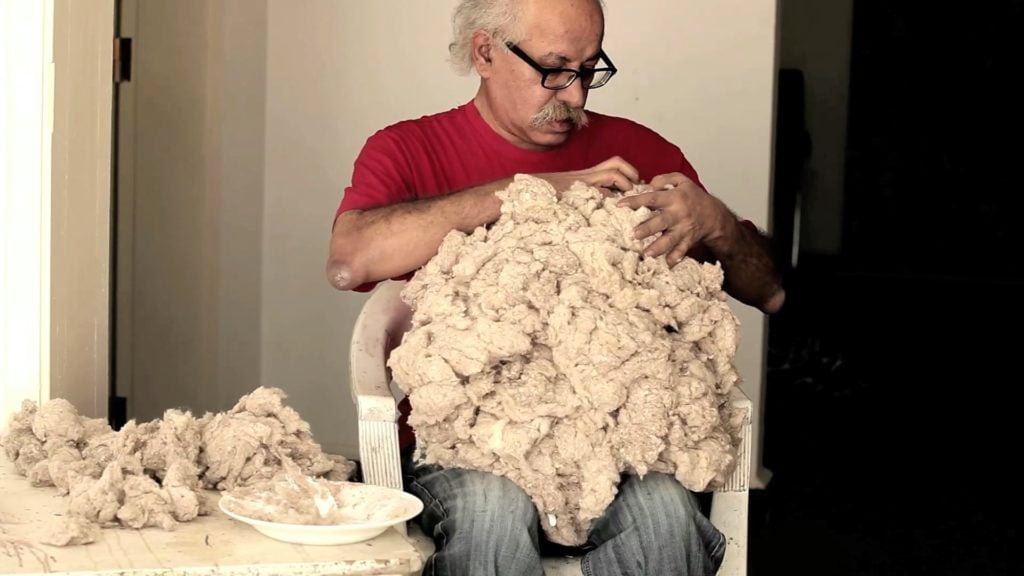
Still from Hassan Sharif’s Cotton (2013). Courtesy of the estate of Hassan Sharif and Gallery Isabelle van den Eynde, Dubai.
In reality, the emirates had been fostering artists and staging important exhibitions for many years. An artist collective led by Hassan Sharif known as the Group of Five had been pushing the boundaries of conceptual practice, supporting each other and teaching, in both Dubai and Sharjah, for decades. Sharjah’s Emirates Fine Arts Society, founded in 1980, served as a nurturing space for artists to gather, speak about their work and inspire the younger generation. Abu Dhabi’s Cultural Foundation was a mainstay, with a lively program and dusty, old offices that functioned as hangouts and even an informal school for poets, writers, artists, and filmmakers.
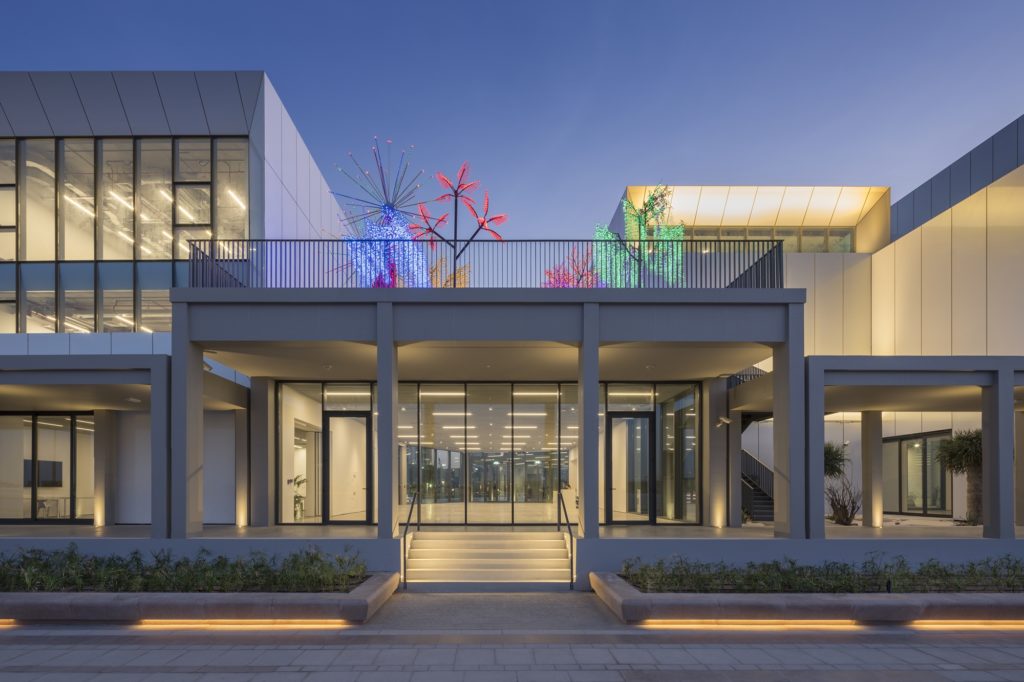
View (Detail) of Jameel Arts Centre, Dubai, Courtesy Art Jameel.
When international market attention converged on the UAE in the mid-2000s, it was often assumed that the country was a passive body, as though culture had just happened to it, as a new phenomenon. This is classic, colonial “terra nullius” narrative.
Even the market development did not happen by itself. Dr. Anwar Gargash, a highly knowledgeable collector who is now the minister of state for foreign affairs, recently recalled how, throughout the 1990s, he and a few Emirati colleagues would call friends before each opening at the now internationally recognized Green Art Gallery, encouraging them to support local artists and local business.
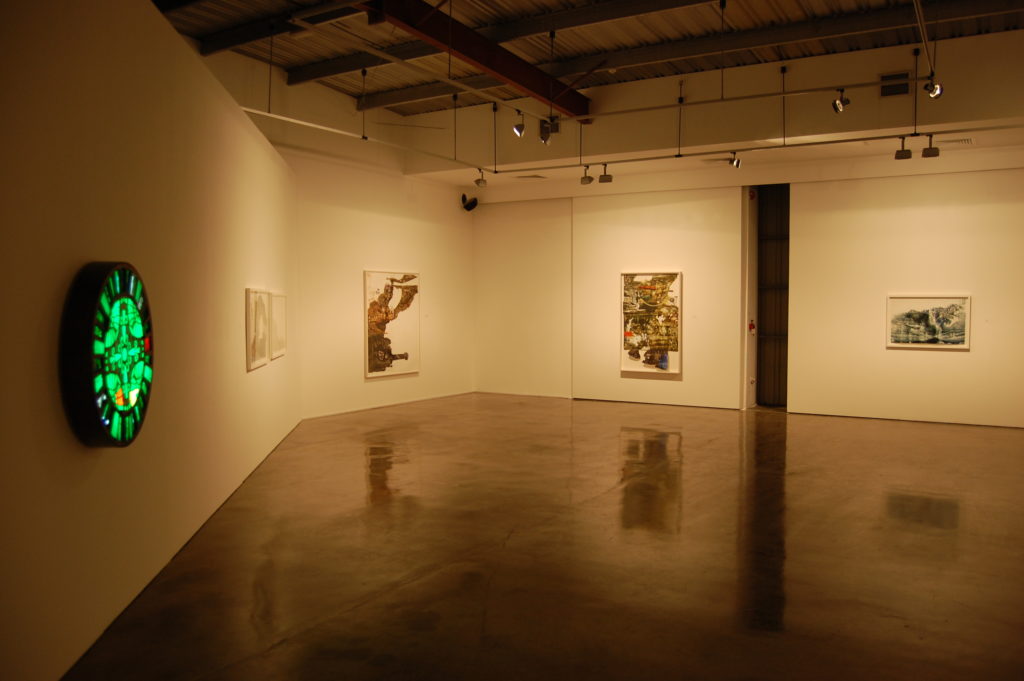
Laleh Khorramian, Zenith and Nadir at The Third Line gallery in October 2008.
Rapid Development
The pace of development in the Dubai scene picked up considerably the 2000s, corresponding with two factors. The higher education sector developed rapidly—running concurrently with a near shut-down abroad, as in the post-9/11 era it became harder for young Arabs to travel to the US—and particularly benefited women, as they could now study en masse, at home, without having to live solo in foreign countries.
Alongside this, Dubai set up free zones for media, internet, and finance, attracting talent from around the Middle East and South Asia. Many of these bankers, entrepreneurs, advertising personnel, designers, and journalists came from families in Syria, Lebanon, Palestine, Iran, India, and Pakistan with long traditions of frequenting galleries and museums. And culture was one area of UAE society where Emirati Nationals were well-represented, leading to a particularly dynamic petri dish of experimentation and debate.
But the art scene developed in a very particular, post-modern kind of way—the market galloped ahead of the education sector. Even with this rich history, there were very few independent institutions, particularly with a long-term, sustainable future, for artists and audiences to rely on.
It would have seemed inconceivable in the early 2000s, but now Dubai is the ideal site for a contemporary art museum that embraces both the local and the international, and does not see these positions as binary, but intertwined.
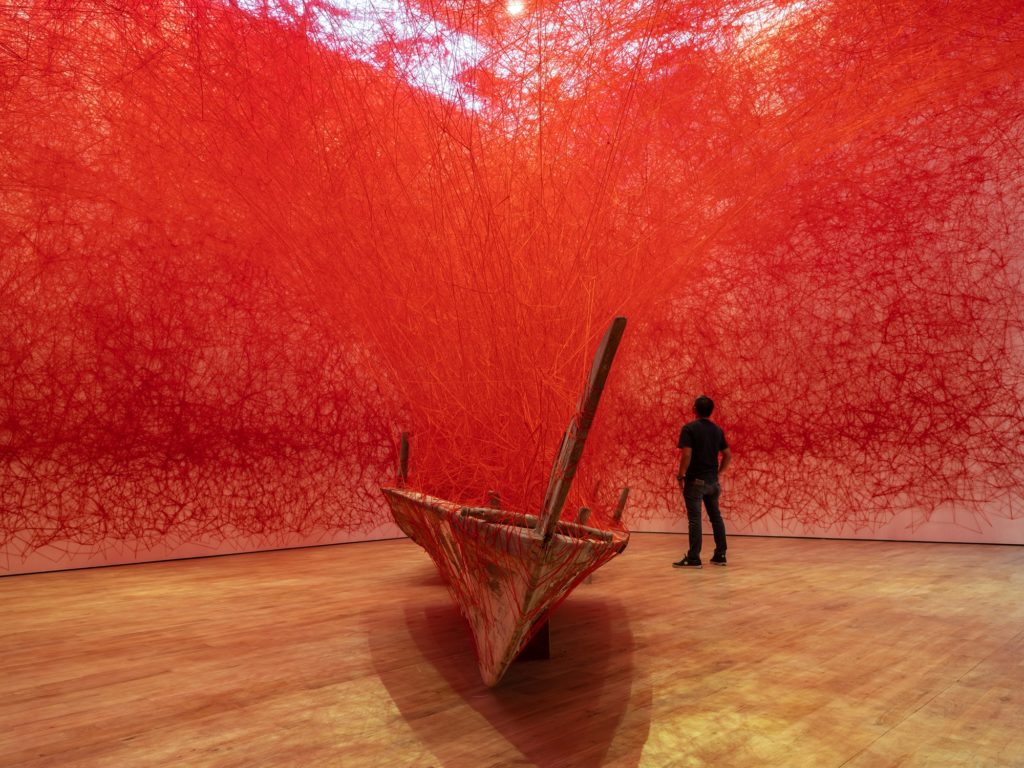
Installation view of Departure 2018 in “Artist’s Rooms: Chiharu Shiota” at Jameel Arts Centre photo: Mohamed Somji.
Jameel Arts Centre, where I now serve as director, opened on November 11. The 10,000-square-meter institution has three floors of dedicated gallery space, a research library, sculpture park, and—we hope, and can palpably feel—a thriving arts-hungry local, regional, and global audience. The Jameel Arts Centre is the product of years of work from our teams in Saudi Arabia and the UAE, a natural progression from the ongoing mission of Art Jameel, which has a longstanding practice of supporting artists, as well as cultural and heritage projects in Saudi, Egypt, across the Arab world, and globally in partnership with international organizations.
Even before Jameel Arts Centre was conceived, the Jameel family was supporting grassroots endeavors in Saudi Arabia, and investing in international institutions, enabling artists from the region to exhibit abroad. Jameel Arts Centre’s development runs concurrent to Hayy: Creative Hub, the cultural neighborhood currently under construction in Jeddah, was already in planning, but it took some years to come to fruition.
This is the reality of the pace at which a deeply layered, sophisticated, and globally relevant art scene has emerged.
Emerging Institutions
Bidoun magazine, which I joined in 2002, was indicative of the early wave of UAE cultural pursuits, led by young creatives who grew up locally, studied abroad, and returned to the Emirates determined to be stakeholders. The Bidoun approach is mirrored today through zines and studios such as WTD, Bait 15, and The State.
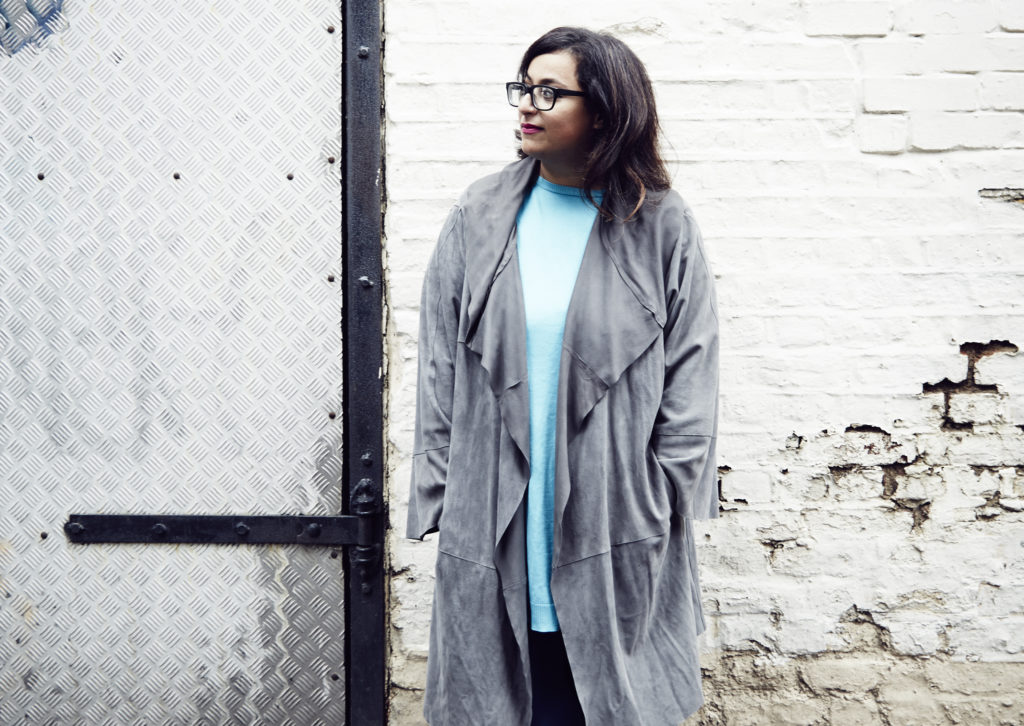
President and Director of Sharjah Art Foundation Hoor Al Qasimi.
Through the 2000s, the UAE’s evolving art scene became a series of rapid milestones amid a decade that saw the rise (and fall) of the Arab Spring and the Gulf states embrace culture as soft power. In 2003, Sheikha Hoor Al Qasimi famously returned from Okwui Enwezor’s documenta and revamped the long-running, local Sharjah Biennial into a weighty, multi-artist international event.
Two years later, new galleries began clustering in the industrial Al Quoz neighborhood, attracted by low rents and large warehouse spaces. In 2006, Art Dubai was founded as the first large-scale fair in Asia and part of a global movement that followed the rise of the Indian and Chinese art markets. Christie’s also held its first auction in the city and Saadiyat Island announced its ambitious plan to build world-class museums, including new partnerships with the Louvre and Guggenheim. In 2009, the UAE fielded its first pavilion at the Venice Biennale.

Installation view of GCC’s My Vision (2017) from “Commercial Break” at Barclays Center’s Oculus. Photo: Jason Wyche ©GCC, courtesy of Mitchell-Innes & Nash.
I joined Art Dubai as director in 2010. We long held the belief that the fair could be more than a “market moment”: it initiated and supported a large-scale, year-round, not-for-profit program and now acts as a regional magnet, providing one stop for globally-aware museum directors, curators, and collectors to (attempt to) absorb a vast region through one efficient hub.
Nowadays, Dubai is established as the commercial art center for the region, and the city is also a key meeting point for artists, especially those working in Iran, Pakistan, and other neighboring countries. The sassy members of GCC, an artist collective that is featured in “Crude,” Jameel Arts Centre’s inaugural group exhibition, always state with a wink that they met in Art Dubai’s luxurious collectors’ lounge.
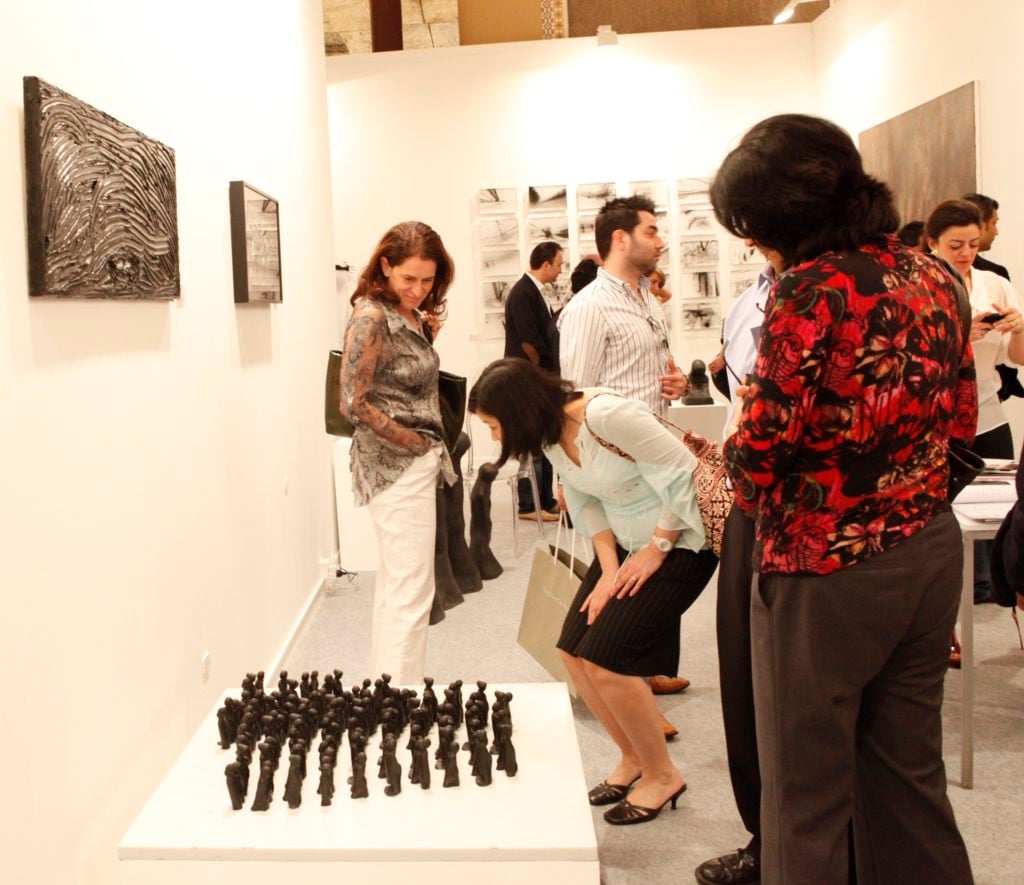
Athr Gallery at Art Dubai in 2010. Image courtesy of Capital D Studio.
A Non-Linear Process
Despite the depth of the scene, it can still be challenging to get international institutions and individuals to move beyond those lazy tropes that continue to define the Middle East and the Gulf in particular. Press coverage often still focuses on censorship, war, and women—peddling well-worn metaphors for the veil, and endlessly expressing surprise at female leadership.
There is so much more than the commercial success story of champagne and glitz in the desert. And today, those stories are hardly hidden beneath the surface, but expressed loud and clear by a new generation of artists, curators, and writers.
The UAE is doing with contemporary art what it has done over the centuries in other areas: acting as a meeting point for an area that extends from India to Iran, central Asia and Africa, as well as across the Arab world.
Jameel Arts Centre opens in this new era. We’ve been particularly encouraged by the support of fellow institutions, both independent and governmental. Our library—the first such arts research center in the Gulf—is a testament to the generosity and collaborative spirit of local colleagues. Donations have come from artists and curators, from galleries and journalists, from partners here in the UAE large and small. The contributions are evidence of the individual archival practices that have marked and continue to hold stories of the art scene’s development.
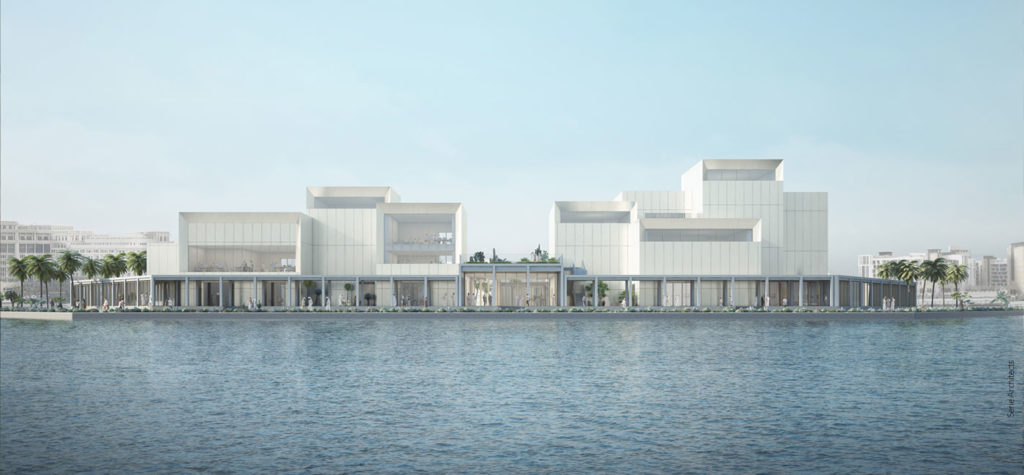
Jameel Arts Centre Dubai, © Serie Architects.
Rather than a sequence of dates that chart the scene’s evolution, it’s perhaps more interesting to consider the complex ways in which institutions and individuals have adapted and reinvented themselves to create the vibrant atmosphere that exists today. The challenges we faced were often matters of infrastructure—how to build an audience in an emphatically diverse country of many languages, where many residents were unfamiliar with the districts galleries popped up in; how to establish nonprofits when the relevant government codes didn’t yet exist; how to support young artists who were between residency visas.
These challenges may have prompted invaluable creative collaborations, but frustratingly, many still exist. These include challenges with residency visas for artists who have a studio practice rather than a traditional 9-to-5; the lack of dedicated art supply specialty stores for working artists; the need for more higher education arts programs, plus under-developed archives for historic art practices. But each of these have been improving over the past decade and a new wave of arts governance is ambitious and intent on change. The growth of the scene in the UAE was, and is, messy and non-linear, but it has a momentum that feels fresh and urgent, and a deep sense that the arts really matter.
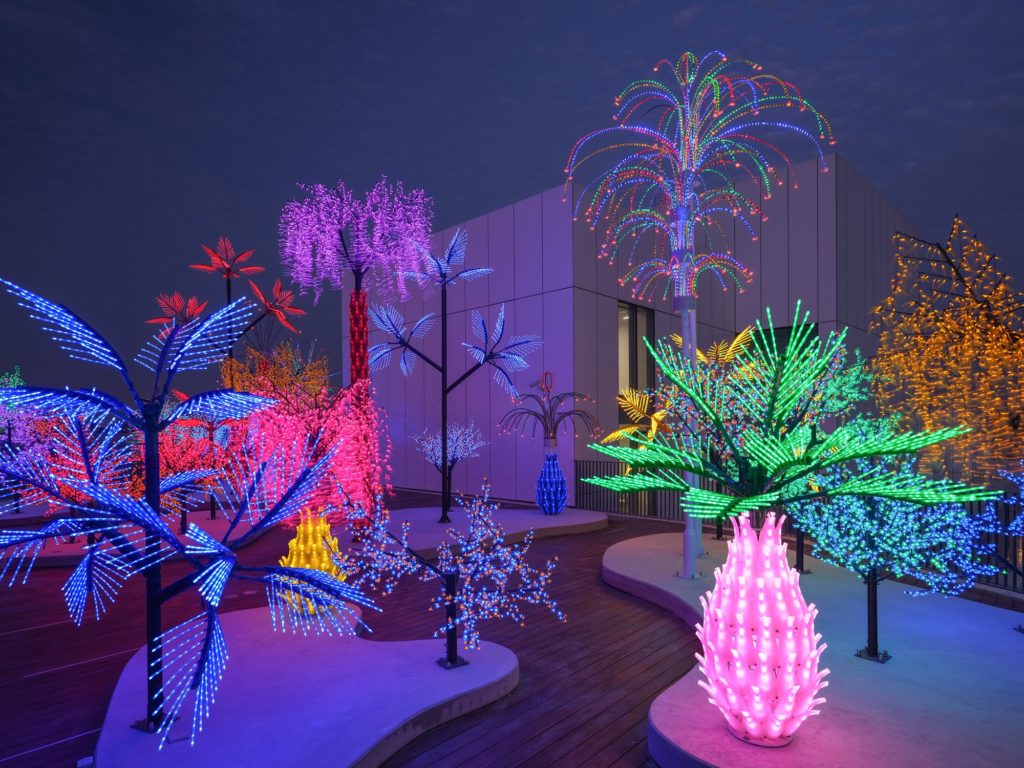
Installation view of Contrary Life A Botanical Light Garden Devoted to Trees (2018) by Ali Farid and Aseel AlYaqoub. Art Jameel Commission for Jameel Arts Centre, Dubai, Courtesy Art Jameel.

Installation view of Green house Interior yet Exterior Manmade yet Natural by Shaikha Al Mazrou.
Antonia Carver is the director of the Jameel Arts Centre, which opened in Dubai on November 11.
